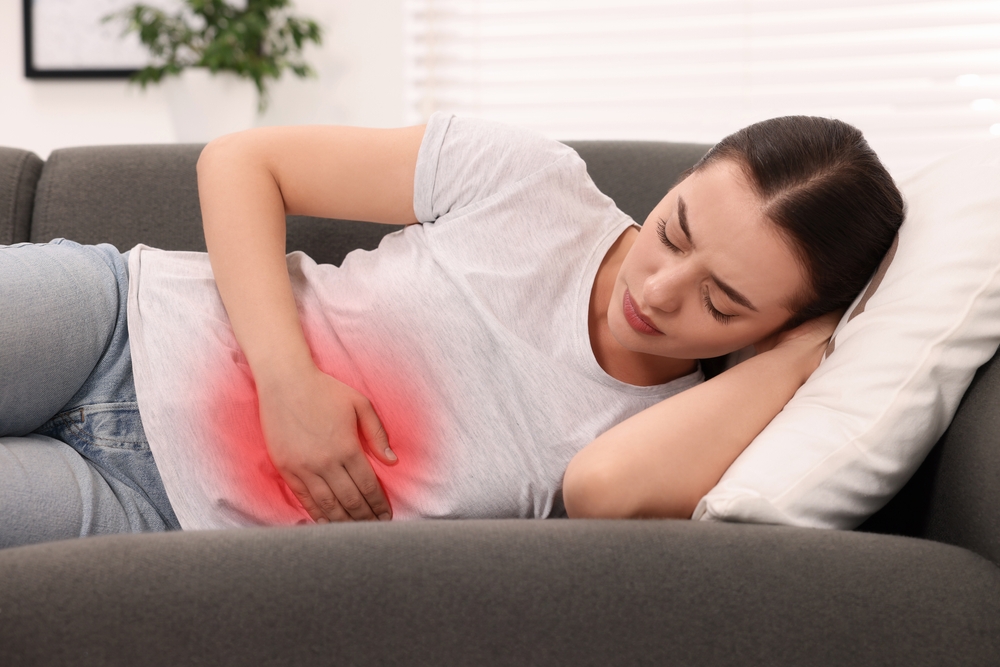What Is Diverticulitis? Understand the Causes of This Sharp Pain in Your Abdomen
Posted on Categories Discover Magazine

Imagine waking up with sharp pain in your abdomen that just won’t go away. For many, this is how diverticulitis makes its presence known. It’s a condition that can strike suddenly, turning seemingly harmless pockets in your colon into the source of serious discomfort. While diverticulitis may sound like an obscure illness, it’s actually quite common, especially as we age.
But what exactly causes diverticulitis, and how can you manage or prevent it from disrupting your life? Let’s dive into the basics of diverticulitis, including its causes, symptoms, and effective treatments.
What Is Diverticulitis?
Diverticulitis is a condition that affects the digestive system, specifically the colon. It occurs when small pouches, known as diverticula, form in the walls of the colon.
These pouches are often harmless and cause no symptoms — a condition called diverticulosis. However, if these diverticula become inflamed or infected, diverticulitis develops, which can lead to a range of uncomfortable symptoms that can hinder daily life.
What Does Diverticulitis Feel Like?
One of the most common symptoms of diverticulitis is abdominal pain, typically on the lower left side of the abdomen. The pain can range from mild to severe and may be constant or intermittent — but it is usually sudden and intense. In more severe cases, the pain can last for several days. People with diverticulitis may also experience nausea, vomiting, fever, chills, cramping, bloating, and changes in bowel habits, including constipation or diarrhea.
For some, diverticulitis can lead to complications such as abscesses, fistulas, urinary problems, blockages, or bleeding. These complications are rare but some can be life-threatening, requiring immediate medical attention.
Read More: Stomachache? Your Gut Bacteria Might Be to Blame
What Causes Diverticulitis?
While the exact cause of diverticulitis isn’t entirely understood, there are several risk factors strongly believed to contribute to the condition. Diverticula typically form in weak areas of the colon wall, and this can happen due to increased pressure from spasms or straining.
Is Diverticulitis Hereditary?
While lifestyle and dietary habits play a significant role in the development of diverticulitis, the evidence is mounting that genetics also plays a major role, up to around 40 percent to 50 percent. Twin studies further support that estimate. However, despite our ever-increasing understanding of diverticulitis, more research is needed to fully understand all the risk factors.
As is the case for many things, another important risk factor for diverticulitis is age. As we grow older, the elasticity of the colon tends to weaken, making it more susceptible to the development of diverticula. In the U.S., more than 50 percent of people over the age of 60 and more than 60 percent of people over the age of 80 have diverticula in their colons — though the majority do not go on to develop diverticulitis.
Other risk factors for diverticulitis include:
-
Obesity
-
Smoking
-
Heavy alcohol use
-
Lack of exercise
-
Low-fiber diet
-
Excessive red meat consumption
-
Low vitamin D levels
-
Some medications, such as Nonsteroidal Anti-inflammatory Drugs
Read More: New Clues to Chronic Diseases Turn Up in the Gut
How to Treat Diverticulitis
Treatment for diverticulitis depends on the severity of the symptoms. For mild cases, treatment may involve a combination of rest, antibiotics, and a temporary switch to a liquid or low-fiber diet to allow the colon to heal. Once symptoms improve, patients are usually advised to slowly reintroduce fiber into their diet to help prevent future flare-ups.
In more severe cases, hospitalization may be necessary. This is particularly true if the patient develops complications such as an abscess or perforation in the colon. In some instances, surgery may be required to remove the damaged part of the colon. This is generally considered a last resort and is only performed when other treatments have failed.
What to Eat With Diverticulitis
Diet plays a crucial role in both managing and preventing diverticulitis. During an acute flare-up, doctors typically recommend a low-fiber or liquid diet to reduce the strain on the colon. Foods like broth, gelatin, applesauce, and even popsicles are often suggested for a few days until symptoms subside.
Once the inflammation has decreased, a gradual reintroduction of high-fiber foods is encouraged. Foods such as whole grains, fruits, vegetables, and legumes can help promote healthy digestion and prevent constipation, which in turn reduces the pressure in the colon and helps prevent to formation of more diverticula.
It was once believed that nuts, seeds, and popcorn could trigger diverticulitis, but research has since debunked this myth. In fact, these foods are rich in fiber and may actually help prevent flare-ups.
Read More: It Doesn’t Take Long to Reset Your Gut Health With Small Lifestyle Changes
Preventing Diverticulitis
Preventing diverticulitis often revolves around lifestyle changes, particularly regarding diet. A high-fiber diet is key, as it helps to soften stools and ultimately reduce pressure on the colon. Drinking plenty of water is also important, as fiber works best when it absorbs water.
Regular exercise has also been shown to lower the risk of both diverticulitis and diverticular bleeding. Lastly, quitting smoking, limiting alcohol use, and maintaining a healthy weight can all help prevent diverticulitis.
If you suspect you have diverticulitis or are experiencing symptoms, it’s important to seek medical advice to get a proper diagnosis and avoid complications. While diverticulitis can be a painful and sometimes serious condition, taking proactive steps to combat it can greatly reduce its impact on your life.
Read More: Recurring Stomach Pain? It Could Be Abdominal Migraines
Article Sources
Our writers at Discovermagazine.com use peer-reviewed studies and high-quality sources for our articles, and our editors review for scientific accuracy and editorial standards. Review the sources used below for this article:
Jake Parks is a freelance writer and editor who specializes in covering science news. He has previously written for Astronomy magazine, Discover Magazine, The Ohio State University, the University of Wisconsin-Madison, and more.